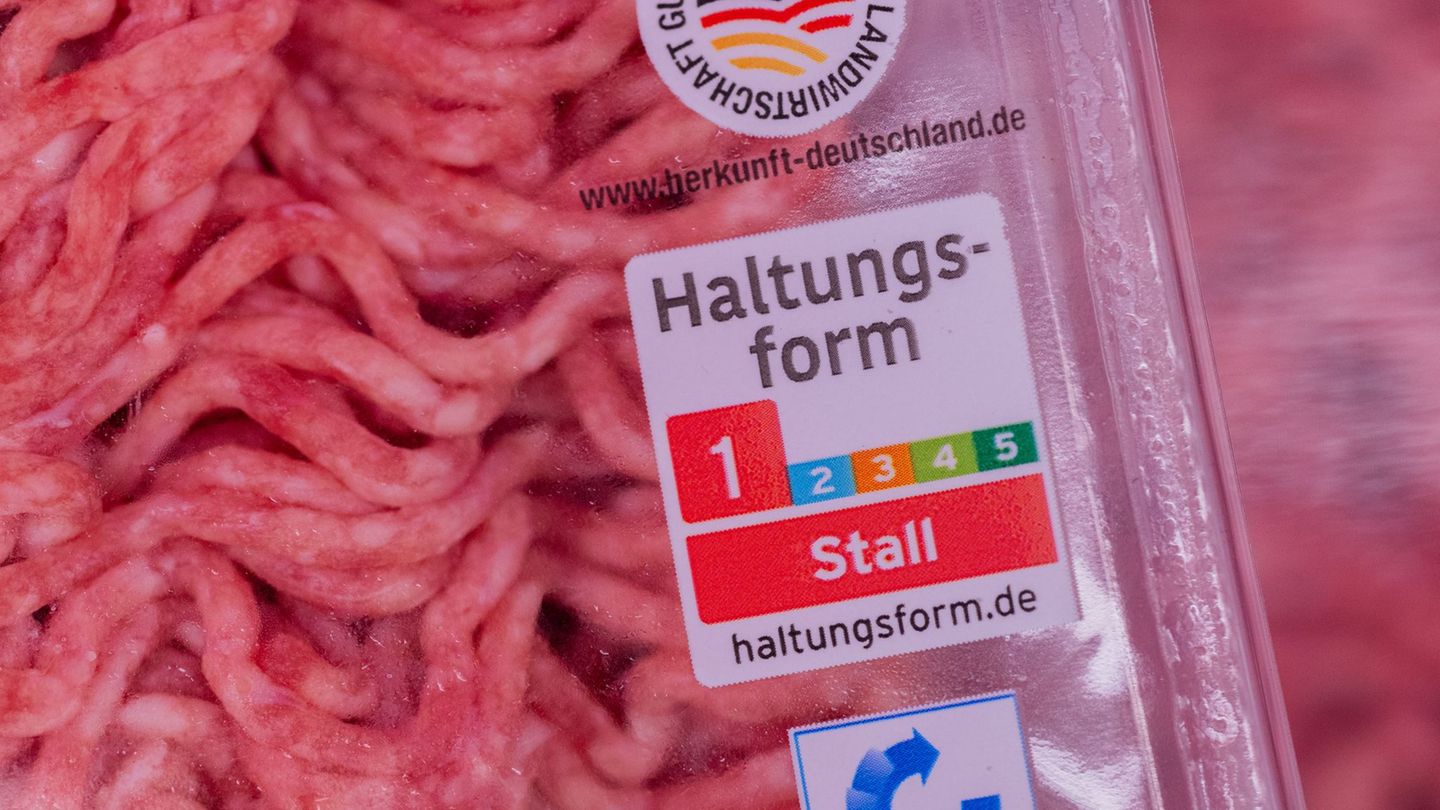Aldi, Rewe & Co.
Retail chains are saying goodbye to cheap meat
Copy the current link
Add to wishlist
Large retailers such as Aldi, Rewe and Lidl are increasingly focusing on better animal husbandry for their own brands of fresh meat. What’s behind the farewell to cheap meat – and what does it mean for prices?
Meat from the lowest level of farming will soon no longer be available to customers in many supermarkets and discounters in Germany. The food trade is increasingly relying on meat with slightly better animal husbandry conditions – especially for its own brands, which make up a large part of the range.
Whether pork, beef or poultry: Aldi Süd has announced that it will no longer offer its own brand fresh meat from the lowest farming method 1 from mid-January. Branded items and international specialties are excluded. Rewe and Penny also want to have switched to at least husbandry type 2. Lidl had set this goal for the end of February 2026 – and has essentially already achieved it, as a spokeswoman said.
Aldi Nord, Kaufland, Edeka and Netto were a little more reserved. For pigs and poultry, people have already switched to higher levels of husbandry. However, upon request, the retailers did not specify goals for a complete switchover of their own brands. This means that fresh beef of the lowest level can still be found in the refrigerated shelves of these stores. Aldi Nord justified this, among other things, with the limited supply of meat from higher farming methods. In addition, the sharp price increases for beef in recent months are a major challenge. Among other things, one notices a noticeable price sensitivity among customers, said a spokesman.
Dealers want to switch by 2030
But the retailers’ overarching goal is: by 2030, the large chains want to completely convert the entire fresh meat range of their own brands in Germany to level 3 and higher. Provided there are enough goods, as the companies repeatedly emphasize. Aldi Nord and Süd first announced the move in June 2021.
The farming system is a voluntary labeling system for meat and processed pork, beef and poultry products. There are five levels with increasing requirements for animal husbandry. At level 3, animals have more space and contact with fresh air, at level 4 they have opportunities to run outdoors, and level 5 corresponds to the “organic” standards.
Foodwatch: Farewell to husbandry level 1 is just a mini-step
Saying goodbye to so-called cheap meat is just an interim step on the path that many retail chains took years ago. Nevertheless, marketing professor Stefan Rohrbach from the Stuttgart Media University sees this as a success: “Customers automatically buy meat that is above the minimum standard. A step that makes sustainability tangible in everyday life.” However, it is important to understand what the higher forms of husbandry mean. For example, that the animals have more space and live in better conditions. “Only then will consumers recognize real progress.”
The consumer organization Foodwatch criticized the move. The abandonment of husbandry form 1 is just a mini-step with cosmetic improvements, said managing director Chris Methmann. “Even in level 2, fattening pigs, for example, are penned in an area that is smaller than one square meter; the animals only have a few ridiculous square centimeters more space than in level 1.”
92 percent for better animal husbandry conditions
For many consumers, animal welfare plays an important role. 44 percent of people perceive products with a higher level of husbandry to be healthier, as a survey by the opinion research institute YouGov shows. As can be seen from the Federal Ministry of Agriculture’s nutrition report published in 2024, 92 percent want better animal husbandry conditions, and 84 percent think the relevant information on the packaging is important.
Consumers are likely to continue to feel the impact of the change: meat from higher levels means higher production costs for farmers and is therefore more expensive. Prices have already risen significantly in recent years. According to the Federal Statistical Office, minced beef cost a good 70 percent more in September than in 2020, minced pork 60 percent and fresh poultry meat 45 percent. However, the price increase is not only related to the change in husbandry, but also to increased costs for energy, feed, wages and logistics.
Industry: Less meat from the lowest levels of farming
When it comes to meat in supermarkets, there has recently been a movement towards products with better animal husbandry conditions. According to the latest data for 2023, 1.5 percent of pork from the self-service shelf came from the lowest level 1. According to the supporting company, there was no longer any meat from the lowest level of meat in the refrigerated shelf of turkeys and chickens. In this area, level 2 (“Stable Keeping Plus”) dominated with shares around 90 percent.
In the case of beef, however, more than three quarters still came from stage 1 in 2023. Forms 3 and 4 made up a fifth. The data refers to fresh meat and preparations such as own-brand minced meat, which make up a large part of the offering.
dpa
Source: Stern



